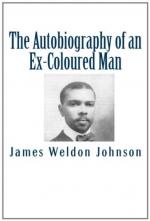
|
| Name: _________________________ | Period: ___________________ |
This test consists of 5 multiple choice questions, 5 short answer questions, and 10 short essay questions.
Multiple Choice Questions
1. To whom does the narrator say he became inseparable in school in Chapter 2?
(a) Shiny.
(b) The Girl.
(c) Joel Chandler Harris.
(d) Red Head.
2. What city does the narrator describe as “a big, dull, red town” in Chapter 4?
(a) Atlanta.
(b) Biloxi.
(c) Miami.
(d) Knoxville.
3. In Chapter 1, the narrator states that he is led to reveal his secret by the same impulse as what?
(a) “The unfound-out criminal.”
(b) “A blind rat.”
(c) “A nun lost in the woods.”
(d) “The doctor telling his patient he’ll die.”
4. What does the narrator have for breakfast that is described as “so light and flaky that a fellow with any appetite at all would have no difficulty in disposing of eight or ten” in Chapter 4?
(a) Pancakes.
(b) Blueberry muffins.
(c) Biscuits.
(d) Waffles.
5. How many students does the narrator say are at the university in Chapter 4?
(a) 1,200-1,500.
(b) 300-400.
(c) 600-800.
(d) 200-250.
Short Answer Questions
1. To whom does the narrator claim to have developed a “sympathetic bond” with at school in Chapter 2?
2. What is the nickname of the fourteen-year-old boy that the narrator befriends in Chapter 1?
3. How much money does the narrator put in his trunk while his fellow roommates sleep in Chapter 4?
4. What does the tall man with the small, dark moustache drill a hole through in Chapter 1 as the narrator watches?
5. Whose schoolwork did the narrator largely complete for him, as described in Chapter 2?
Short Essay Questions
1. In what ways does the narrator show blindness and naiveté regarding his race?
2. How is segregation addressed when the narrator eats his first meal in Atlanta in Chapter 4?
3. Where does the narrator hide his money at the rooming house in Chapter 4? Where does he go after this?
4. How are the author’s teenage years described? For whom did he work and where?
5. Where does the narrator begin working in Jacksonville in Chapter 5?
6. What event takes place informing the narrator of his ethnic heritage in his early years? How does he react to the information?
7. What popular dance does the narrator describe in Chapter 5? When did the dance develop?
8. What are “slave narratives”? How are they related to the narrative of The Autobiography of an Ex-Coloured Man?
9. What elements does the novel share with the Realist Movement in literary style?
10. How is the early childhood of the narrator described in Chapter 1? Where does he live?
|
This section contains 860 words (approx. 3 pages at 300 words per page) |

|




